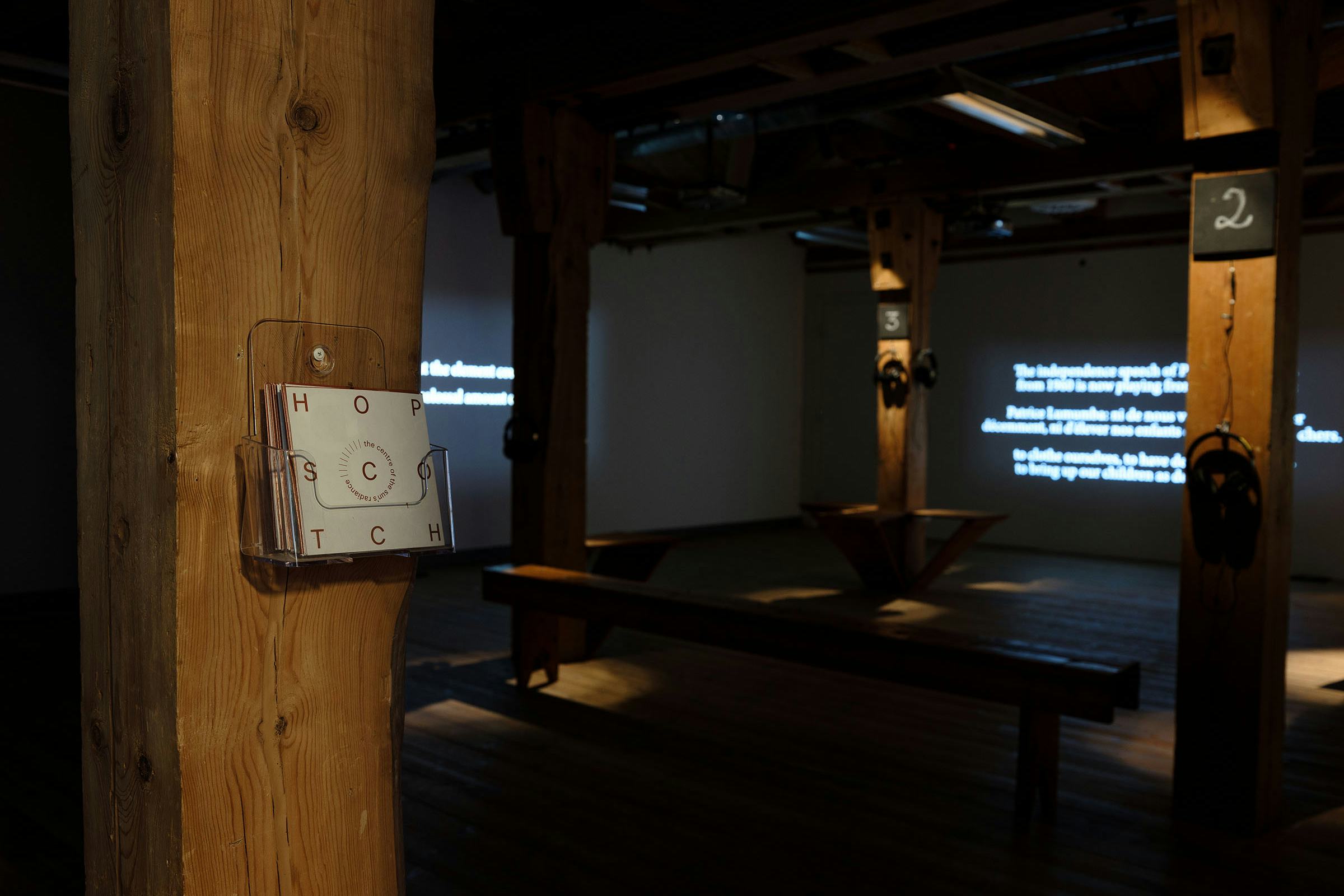LB°20 — Artists
ArchiveInas Halabi (b. 1988, Jerusalem, Palestine) explores power structures inherent in her surroundings, with a special interest in everyday mythology.
Her practice is concerned with how social structures and national narratives are constructed, often drawing from forgotten or lesser-known histories related to the Levant.
On view on at Havremagasinet and Boden train station
Hopscotch (the Center of the Sun’s Radiance), 2021
4 channel sound installation.
Hopscotch (the Center of the Sun’s Radiance) is a seven-chapter soundscape taking its listeners on a journey across Africa and Europe, to explore how histories of labour tied to the train’s development are still visible in the contemporary landscape. The work considers how sound can transform into an image of this landscape, capturing the sediments of trauma, labour and slow violence that make up its composition.
The industrialization boom went hand in hand with the establishment of railroads. Today, towns that thrived as territories of mineral extraction and as railways hubs are still bearing the marks of their industrial and colonial past. The rhythmic sounds of exploited human labour are until now haunting the natural and built residues as well as the collective memory of their local inhabitants.
Massive amounts of minerals like uranium were transported by train from the Katanga province in the Democratic Republic of Congo, former Belgium colony. Through field recordings, oral histories, and radio broadcasts, Halabi traces the extraction and transport of uranium from the Shinkolobwe mine in the Democratic Republic of Congo to a uranium refinery in Olen, Belgium. The journey examines how the (colonial) past continues in the present, through the continuous exploitation of land. Both the mine and the refinery were owned by the Union Minière du Haut Katanga, a Belgian company which operated in the Katanga province until the 1960’s, and almost fully controlled the world uranium market.
Hopscotch (the Center of the Sun’s Radiance) borrows its title and the structure of Julio Cortázar’s eponymous novel, Hopscotch, and shifts between chapters whose beginnings and ends are never the same, disrupting the notion of linear time that characterises both historical and train-based narratives. The second part of the title is taken from Patrice Lumumba’s independence speech of 1960 where he refers to the Congo as “the centre of the sun’s radiance for Africa,” portraying the ongoing struggle for true independence against former colonial powers' economic control.
In the Luleåbiennalen 2024, Hopscotch unfolds simultaneously in the exhibition space of Havremagasinet in Boden, in an immersive four-channel soundscape showcasing the seven chapters, and extends outside, exhibited in Boden’s train station.
As railroads crisscross and connect distant locations, Hopscotch connects the Democratic Republic of Congo to the Iron Ore Line, an important railway system for the transportation of iron ore running through northern Sweden and Norway, of which Boden is an important part. Both railways have been central to sustaining the economic interests of colonial and capitalistic powers in social contexts where they underscore an asymmetry in benefits and impacts. While the colonial powers and big industrial corporations continue to acquire substantial economic gains, local communities and regions are still bearing the brunt of environmental degradation, displacement, and social disruption.
Inas Halabi holds an MFA from Goldsmiths, University of London, GB, and completed an artist residency at De Ateliers in Amsterdam, NE. Recent exhibitions and screenings include Reel Palestine Dubai (2024), TAVROS Athens (2024), Sharjah Film Platform 6, Sharjah, UAE (2023), Beirut Art Centre (2023), Hot Docs Canadian International Documentary Festival (2023), de Appel Amsterdam (2023), Showroom London (2022), Europalia Festival, Brussels (2021), Silent Green Betonhalle, Berlin (2021); Stedelijk Museum, Amsterdam (2020); and Film at Lincoln Center, USA (2020). She lives and works between Palestine and the Netherlands.
Supported by
Mondriaan Fund
